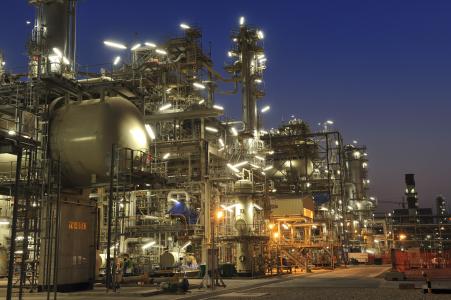By Maria Gallucci -
When oil prices topped $100 a barrel, energy companies were eager to turn cheap natural gas into liquid fuels such as diesel. A gas-to-liquids facility would cost billions to build, but as long as oil stayed expensive and shale gas production flourished, the economics promised to pan out. Now, with crude prices plunging past $50 a barrel, the fledgling sector is in limbo.
“All the current projects that are being contemplated rely on quite a wide spread between the crude oil price and the price of natural gas for their financial economics,” Sandy Fielden, an analyst with energy consultancy RBN Energy LLC in Austin, Texas told International Business Times. “If the price of liquids falls by over 50 percent in six months, as it has, then obviously you’re squeezing the margin.”
The latest casualty of cheaper crude is an $11 billion natural gas-to-diesel facility on Louisiana’s Gulf Coast. Sasol Ltd., a South African energy giant, said Wednesday it was shelving the Lake Charles project indefinitely due to the steep decline in oil prices. “This will allow us to evaluate the possibility of phasing in the project in the most pragmatic and effective manner,” David Constable, Sasol’s chief executive, said in a statement.
Sasol’s announcement comes just weeks after Royal Dutch Shell PLC dropped plans for a similar facility in natural gas-rich Qatar. The Anglo-Dutch energy firm abandoned its own Louisiana gas-to-liquids project in 2013, citing “uncertainties on long-term oil and gas prices and differentials.”
At $100 a barrel -- the price of oil last summer -- a massive gas-to-liquids facility would have decent prospects for economic growth, said Henan Xu, an energy analyst with Platt’s Bentek Energy in Colorado. At those prices, a facility could generate a 19 percent internal rate of return. But at current oil prices, those returns are “incalculable,” because the projects now have a negative “net present value,” meaning they cost more money than they take in, Xu said.
Technology to turn natural gas into a liquid fuel has existed since before World War II, but fuels weren’t produced commercially until the early 1990s. PetroSA, South Africa’s national oil company, built the world’s first plant in 1992 as part of an effort by the apartheid government to protect its fuel stocks from international sanctions. Shell built its first facility in Bintulu, Malaysia, in 1993, and has a second $19 billion plant in Qatar, called Pearl GTL, which is the largest facility of its kind, according to the company. Sasol also has a plant in Qatar, while Chevron Corp. opened its Escravos GTL plant last fall in a Nigerian swamp after a decade of delays.
About half a dozen other gas-to-liquids projects are still in the works, including two pilot-sized plants in Houston and projects in Uzbekistan, Russia and offshore Brazil. While most of the facilities are smaller than the monster plants already in operation, Xu said their developers will likely still struggle to secure financing at the current oil price. “No matter if it’s big or small, when the oil prices are $50 a barrel, it doesn’t make sense at all,” she said.
However, there is a bright spot in the gas-to-liquids segment. A handful of small companies are using the technology to reduce air pollution caused by shale oil production. In areas like North Dakota’s Bakken shale, natural gas often rises up with crude oil, and about a quarter of it is simply burned off, or “flared.” Primus Green Energy in Hillsborough, New Jersey, has developed a system to capture flare gas and covert it to gasoline and methanol, which is sold for use in cars and chemicals.
George Boyajian, Primus’ vice president of business development, said the business is actually growing despite low oil prices, in large part because state regulators and the Obama administration are cracking down on air and methane pollution from oil and gas operations, forcing drillers to clean up their acts. He said the company’s 500-barrel-a-day system costs “significantly less” than $50 million, the industry’s price estimate for a system of that size, though he didn’t give specific numbers.
“We feel we’re in the worst-case scenario right now, and we’re still break-even,” Boyajian said. “When oil prices rebound, our projects will actually produce an attractive return.” He said Primus is in talks with potential clients for two commercial-scale facilities, and its demonstration plant in Hillsborough came online in 2013.
Fielden, the energy consultant in Austin, said he doesn’t believe low oil prices will be the end of massive gas-to-liquids projects like the one shelved by Sasol in Louisiana. Such facilities are built to run for 20 to 30 years and could give operators an advantage should oil prices spike or rise over time. “It’s really a bet on longer-term price differences,” he said. “The only time they’re going to be competitive is when the price of liquids and gas is out of whack.”
